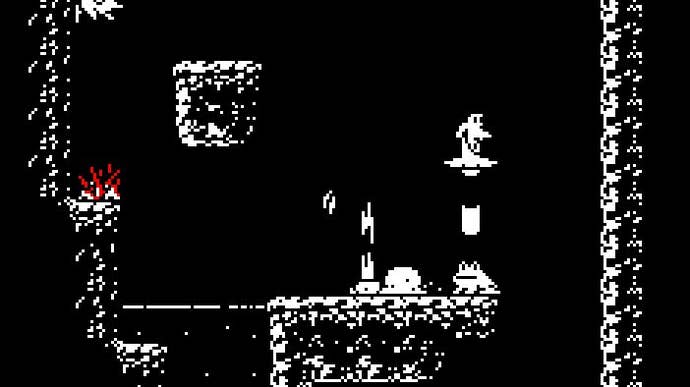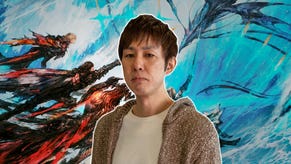BitSummit 2015 Diary, Day 2: Japan's Favorite Western Indie, Downwell, and Airship Q
Kat returns to Japan's indie festival for Day 2.
This article first appeared on USgamer, a partner publication of VG247. Some content, such as this article, has been migrated to VG247 for posterity after USgamer's closure - but it has not been edited or further vetted by the VG247 team.
Cover games long enough and you eventually start to get a feel for the rhythm of certain events. GDC is the most incestuous, E3 the most marketing-driven, and PAX the most fan-driven. Based on my experience this weekned, BitSummit sits somewhere between GDC and PAX on the event spectrum, serving as a focal point for both local gamers and the Japanese development community.
I know journalists who hate having to deal with the public during events, complaining about how they'll knock you over to get a t-shirt or hog game kiosks when you're on a deadline. But by the same token, the fans are the ones who provide the energy at an event. They're the ones who really want to be there, as opposed to having to be there for work, and their habits are often worth watching.
Though it wasn't as crowded on its second day as it was on its first, BitSummit managed to draw a healthy array of gamers of all ages, many of whom were getting a chance to see western indies like Octodad, Hotline Miami, and Assault Cactus for the first time. Perhaps the biggest roar of the day came from a large crowd that had gathered around a game of Videoball, where they cheered as if they were watching an actual soccer match.
Later on, I spoke with Sanatana Mishra, designer of the indie shoot 'em up Assault Android Cactus, another game in the Indie Megabooth. He related the story of a Japanese gamer who spent three full hours at the booth playing his game, then went home and thanks Mishra via email for the revelatory experience. Mishra, who professes to be a fan of Japanese shoot 'em ups, was surprised and honored to receive such praise.
I mostly avoided the Indie Megabooth, having seen many of the games already. For Japanese gamers, though, many of them were brand new, and Android Assault Cactus in particular reaped the benefits. At the end of the show, it was named the Best Foreign Game by the BitSummit judges.

On the opposite side of the spectrum, one Japanese gamer who is very well versed in western indies is Ojiro Fumoto, popularly known as Moppin in the game development community. Just over a year ago, he was an opera student who played games in his spare time. Now he's making Downwell, a fascinating mix of Spelunky-like dungeon diving and shoot 'em up mechanics that's been picked up by Devolver Digital.
Moppin developed a taste for indie games comparatively early, his favorites being Spelunky and Nuclear Throne. His own game very much fits into that tradition, mating black-and-white minimalism with sophisticated design. In one short year he's rocketed to fame among the indie community in Japan, earning a loud ovation from assembled developers at the after-show party.
His plaudits are well-deserved. Though its graphics are simple in the extreme — a concession to Moppin being a first-time developer working in GameMaker — the core of the gameplay is very strong. I was struck by the sense of momentum as the main character plummets ever downward, alternately shooting and bouncing off foes as they go. It gets very hard very fast as the screen fills with enemies, and I'm not ashamed to say that I wasn't able to make it out 1-2 following multiple attempts. Having said that, I felt compelled to keep play, which is probably the highest compliment you can pay to a game like Downwell.
Moppin himself is an outlier among the Japanese game development community. Having spent some time in New Zealand growing up, his taste in games is decidedly western, and it shows in the games that inspired his own efforts. He's also very young, having only recently dropped out of college to work on his game. The game development community on both sides of the Pacific is rapidly taking notice of his work, though, making him an unlikely leader in an old-school community.
A few days ago, I had lunch with Alvin Phu, an indie developer based in Japan who has become what some term "the ringleader" of the Tokyo community. I remarked on how Square Enix appears to be on the rebound since the release of Final Fantasy XIV: A Realm Reborn in 2013.
"I don't know," he told me, "they've lost a lot of people. Ex-Square Enix developers are everywhere."
I encountered some of them on the floor at BitSummit, where they were showing Airship Q for the PlayStation 4 and PlayStation Vita, a game that they're terming a "Sandbox Action RPG." It bears some superficial resemblance to Minecraft, but there are any number of key differences, like the fact that it's 2D. It's also much more structured than Minecraft, with arrows that explicitly tell you where you should go next (at least in the tutorial). Finally, instead of the blocky, now-iconic Minecraft Guy, it stars an anthropomorphic cat.
The area they were showing, which they say is a tutorial area, is a multi-room maze, its most striking feature being the ability to pull the camera back and see the entire world, then push back in again. Where it resembles Minecraft is in the way you can break down environmental features for materials that can in turn be used to reach new areas of the map, whether by stacking up blocks or crafting weapons that can knock down obstacles. Eventually, you come across a simple airship that can be flown around the map and tricked out with items like cannons.
Something tells me that what I was playing is not representative of the final game. What I saw bore a closer resemblance to Metroid than a sandbox RPG. In that regard, it's tough to get a feel for how it will eventually turn out, but the trailer seems promisingly crazy if a tad on the simple side visually (the scaling camera helps mitigate the basic graphics when playng the actual game).
The team behind Airship Q includes Kumi Tanioka, the composer of Final Fantasy Crystal Chronicles, and Kengo Nakajima, who purportedly developed a "3D environmental simulator" in 2004, some five years before Minecraft. They're already doing well for themselves, having raised $680,000 for Airship Q. Along with developers ranging from Konami to Grasshopper Manufacture, they join a host of Japanese industry veterans who are moving on to try something new. If Airship Q is any indication, Japanese game development is moving with them.










